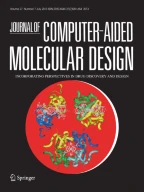1858Accesses
9Altmetric
4Mentions
Abstract
It appears so simple at first glance, “tautomers are isomers of organic compounds that readily interconvert, usually by the migration of hydrogen from one atom to another”. If a chemist can describe the problem so succinctly, one might question why the complication of tautomerism remains a considerable challenge to cheminformatics and computer-assisted drug design. With a half-century of experience with representing molecules in computers, and almost limitless modern computational power, the problem should have been solved by now. The unfortunate answer is that the frustration and inconvenience of a database search failing to find matches due to differences in the tautomeric forms of the query and registered compounds is but the tip of an iceberg. Prototropic tautomerism, the movement of hydrogens around a molecule, is but just one aspect of an interconnected web of complications. These include mesomerism, aromaticity, protonation state, stereochemistry, conformation, polymerization, photostability, hydrolysis, metabolism and EOCWR (explodes on contact with reality). The common theme is that valence theory, which underlies all modern chemical informatics systems, is an approximate theoretical model for representing molecules mathematically, and, as with all models, it has limitations and domains of applicability. In the physical environments that chemists care about, small organic molecules are often dynamic, existing in multiple equivalent or interconvertible forms. A single connection table can at best represent a snapshot or sample from these populations. Although partial algorithmic solutions exist for handling the most common cases of tautomerism, this perspective hopes to argue that the underlying problems perhaps make tautomerism more complex than it might first appear.
This is a preview of subscription content,log in via an institution to check access.
Access this article
Subscribe and save
- Get 10 units per month
- Download Article/Chapter or eBook
- 1 Unit = 1 Article or 1 Chapter
- Cancel anytime
Buy Now
Price includes VAT (Japan)
Instant access to the full article PDF.



































Similar content being viewed by others
Explore related subjects
Discover the latest articles and news from researchers in related subjects, suggested using machine learning.References
Lewis GN (1916) J Am Chem Soc 38(4):761
Baker JW (1934) Tautomerism. Van Nostrand, New York
Elguero J, Marzin C, Katritzky AR, Linda P (1976) Advances in heterocyclic chemistry. Supplement 1: The tautomerism of heterocycles. Academic Press, New York
Martin YC (2009) J Comput-Aided Mol Des 23:693–704
Pauling L (1939) The nature of the chemical bond. Cornell University Press, New York
Sayle R, Skillman G (2002) Hooked on protonics. American Chemical Society Fall Meeting Boston 2002.http://www.eyesopen.com/about/events/presentations/acs02/index.htm. Accessed 3 Mar 2010
Labute P (2005) J Chem Inf Model 45(2):215–221
Lexichem Manual, Version 2.0. OpenEye Scientific Software, Santa Fe, New Mexico.http://www.eyesopen.com/docs/pdf/lexichem.pdf. Accessed 3 Mar 2010
Sayle R, Nicholls A (2006) J Comput-Aided Mol Des 20:191–208
Taylor P (1998) Tautomeric preference: survey and guidelines. Lecture notes. Los Alamos National Laboratories (LANL), Los Alamos, NM, USA
Stocks M, Alcaraz L, Griffen E (2007) On medicinal chemistry. Sigma Aldrich, St Louis
Perez GV, Perez AL (2000) J Chem Ed 77(7):910–914
Pearlman RS (2005) System and method for providing a canonical structural representation of chemical compounds. United States Patent Application 20050125210(A1)
Pearlman RS (2005) System and method for identifying structures of a chemical compound. United States Patent Application 20050159900(A1)
IUPAC (1996) Basic terminology of stereochemistry, IUPAC Recommendations. Pure and Appl Chem, 68(12):2193–2222.http://www.iupac.org/publications/pac/1996/pdf/6812x2193.pdf. Accessed 3 Mar 2010
Oellien F, Cramer J, Beyer C, Ihlenfeldt W-D, Selzer PM (2006) J Chem Inf Model 46(6):2342–2354
Kenny PW, Sadowski J (2004) In: Oprea TI (ed) Chemoinformatics in drug discovery. Wiley-VCH, Weinheim, pp 271–285
Milletti F, Storchi L, Sforna G, Cross S, Cruciana G (2009) J Chem Inf Model 49(1):68–75
Trepalin SV, Skorenko AV, Balakin KV, Nasonov AF, Lang SA, Ivashchenko AA, Savchuk NP (2003) J Chem Inf Comput Sci 43(3):852–860
Ting A, McGuire R, Johnson AP, Green S (2000) J Chem Inf Comput Sci 40(2):347–353
Mockus J, Stobaugh RE (1980) J Chem Inf Comput Sci 20(1):18–22
Sayle R, Delany J (1999) In: innovative computational applications: the interface of library design, bioinformatics, structure-based drug design and virtual screening. IIRG publishers, San Franciso.http://www.daylight.com/meetings/emug99/Delany/taut_html/sld001.htm. Accessed 3 Mar 2010
QuacPac Manual: Tautomers. Version 1.3.1. OpenEye Scientific Software, Santa Fe, New Mexico.http://www.eyesopen.com/docs/pdf/quacpac.pdf. Accessed 3 Mar 2010
Pipeline Pilot Chemistry Collection: Advanced Chemistry User Guide (2008) Accelrys, San Diego, California
Moran D, Sukcharoenphon K, Puchta R, Schaefer HF III, Schleyer PR, Hoff CD (2002) J Org Chem 67(25):9061–9069
Allen FH (2002) Acta Crystallogr B58:380–388
Gilson MK, Gilson HSR, Potter MJ (2003) J Chem Inf Comput Sci 43(6):1982–1997
Katritzky AR, Pozharskii AF (2000) Handbook of heterocyclic chemistry. Pergamon Elsevier, Amsterdam
Valters RE, Flitsch W (1985) Ring-chain tautomerism. Plenum Press, New York
Altshuler DL, Dickson WB, Vance JT, Roberts SP, Dickinson MH (2005) Proc Natl Acad Sci 102(50):18213–18218
Acknowledgments
The author would like to acknowledge the patient mentoring on the complex subject of tautomers from Peter Taylor, Peter Kenny and John Bradshaw. I’d also like to thank Evan Bolton, Andrew Grant, Ben Ellingson, Jack Delany, Geoff Skillman, Jens Sadowski, Hugo Kubinyi and Yvonne Martin for many interesting and enlightening discussions and numerous perplexing tautomeric examples.
Author information
Authors and Affiliations
NextMove Software, 1303 Bartlet Court, Santa Fe, NM, 87501, USA
Roger A. Sayle
- Roger A. Sayle
You can also search for this author inPubMed Google Scholar
Corresponding author
Correspondence toRoger A. Sayle.
Rights and permissions
About this article
Cite this article
Sayle, R.A. So you think you understand tautomerism?.J Comput Aided Mol Des24, 485–496 (2010). https://doi.org/10.1007/s10822-010-9329-5
Received:
Accepted:
Published:
Issue Date:
Share this article
Anyone you share the following link with will be able to read this content:
Sorry, a shareable link is not currently available for this article.
Provided by the Springer Nature SharedIt content-sharing initiative


